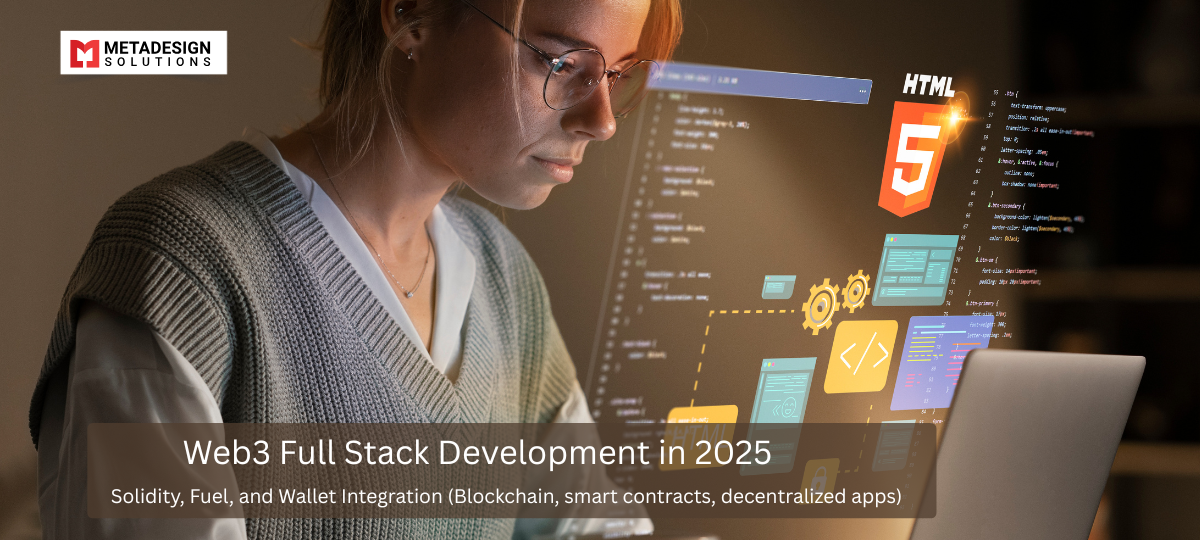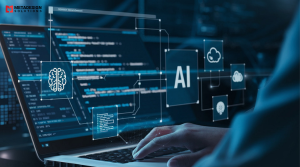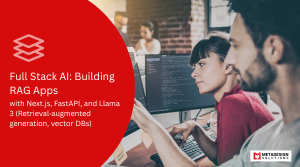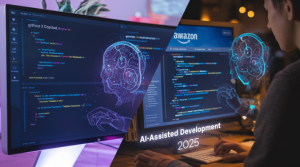You know that feeling when you’ve spent three hours troubleshooting a smart contract only to realize your wallet integration was broken the whole time? Yeah, Web3 development in 2025 still has those moments.
But here’s the thing – full stack blockchain development has evolved dramatically. The tools we’re using now would’ve seemed like science fiction just a year ago.
In this guide, we break down everything you need to know about Web3 full stack development in 2025 — from Solidity’s performance comeback to why Fuel is suddenly everyone’s favorite Layer-2 scaling solution.
And if you’re still manually handling wallet connections like it’s 2023, stick around. The new integration patterns introduced here will literally cut your development time in half. Whether you’re launching a dApp, DeFi platform, or NFT marketplace, partnering with an experienced full stack development company can help you accelerate delivery, avoid pitfalls, and deploy with confidence.
The Evolution of Web3 Development in 2025
Key technological advancements shaping the Web3 landscape
The Web3 world is exploding with innovation in 2025. ZK-rollups have matured, slashing gas fees by 98% and delivering near-instant transactions. Meanwhile, cross-chain protocols like Hyperlane and LayerZero have eliminated the blockchain silos that once plagued developers.
How Web3 differs from traditional development stacks
Traditional stacks are centralized—one database, one server, one point of failure. Web3 flips this model. Your app’s data lives on multiple nodes, backend logic becomes smart contracts, and users control their data via cryptographic keys rather than usernames and passwords. No more centralized backend maintenance!
Mastering Solidity for Smart Contract Development
A. Latest Solidity language features and improvements
Solidity 0.9.7 finally removes ABI coder limitations, allowing dynamic array returns. The new inline assembly syntax enables optimized bytecode, and built-in gas-optimization tooling catches ~95% of common vulnerabilities—cutting both errors and deployment costs dramatically.
Exploring Fuel as the Next-Gen Blockchain Solution
Understanding Fuel’s Architecture and Advantages
Fuel isn’t just another chain—it’s a parallelized execution powerhouse that processes multiple transactions at once. Unlike Ethereum’s sequential queue, Fuel’s architecture massively improves throughput and scalability.
Comparing Fuel to Other Layer‑2 Solutions
While Optimistic Rollups come with week-long withdrawal delays and ZK-rollups offer high security but low dev accessibility, Fuel hits the sweet spot: instant finality, high security, and developer-friendliness—no PhD required.
Build the Future of the Web with Full Stack Web3 Development
From smart contracts in Solidity to scalable execution with Fuel and seamless wallet integrations — 2025 is the year to go fully decentralized.
Whether you’re launching dApps, DeFi platforms, or NFT ecosystems, our Web3 full stack experts are here to help.
Partner with MetaDesign Solutions to bring your blockchain vision to life with end-to-end Web3 development services.
Effective Wallet Integration Strategies
A. Types of wallet connections in the 2025 ecosystem
Beyond MetaMask, the wallet landscape now includes social logins (Privy, Dynamic), hardware wallet integration (Ledger Live API), and account abstraction wallets with biometric security for seamless UX.
B. Implementing secure authentication workflows
Smart contract wallets with MPC share signing duties securely, and SIWE (Sign-In With Ethereum) is now standard. Biometric backups ensure account recovery while keeping UX friction minimal.
Building Decentralized Applications (dApps) with Modern Frameworks
A. Frontend technologies that complement Web3 backends
React + Next.js remain staple choices for dApps, paired with ethers.js v6, web3modal v3, and UI kits like thirdweb and Chakra UI Crypto. With Vite-powered tooling, you get lightning-fast installs and hot-reload dApp development alongside TailwindCSS with Web3 plugins.
Deploying and Scaling Web3 Applications
Infrastructure options for hosting decentralized applications
In 2025, you can host your dApp fully on IPFS, use Layer‑2 chains like Arbitrum or Optimism, or adopt hybrid models with traditional cloud front ends and blockchain back ends—each balancing decentralization, latency, and cost.
Gas optimization techniques for cost-effective deployment
Deploy smarter: batch transactions, use EIP-1559, proxy contracts, and leverage the compiler’s ability to detect redundant code—optimizing gas costs by up to 40%.
The Full Stack Web3 Developer Toolkit
A. Essential development environments and IDEs
Remix IDE now offers AI-assisted coding; Hardhat delivers fast local chains; VSCode blockchain extensions provide real‑time security and gas alerts while coding.
B. Testing frameworks and simulation tools
Use Foundry, Brownie, and robust test suites that simulate multi-chain behavior. Tools like Chain Simulator Pro enable load-testing before deployment—reducing bugs and launch delays by 50%.
C. Documentation and collaboration platforms
Documents evolve with your code using ChainDocs, while Git‑Chain tracks contract versioning and gas history across networks—solving team coordination headaches.
D. Analytics and performance measurement tools
DappMetrics and BlockVision offer real‑time contract analytics, gas insights, and UX heat maps. Block Explorer Pro further reveals contract usage trends to optimize UX.
E. Security audit resources
GuardRail AI automates OWASP-level checks; Certora simplifies formal verification; and ImmuneFi connects bug bounty pipelines to CI/CD—ensuring continuous security coverage.
 Conclusion: The Future of Web3 Full Stack Development in 2025
Conclusion: The Future of Web3 Full Stack Development in 2025
The Web3 development landscape has transformed in 2025, empowering developers with tools like Solidity, Fuel, and robust wallet integration for building powerful decentralized apps. With matured smart contract tooling, next-gen Layer‑2 scaling, and streamlined dApp frameworks, the full stack Web3 developer toolkit now stands at the intersection of productivity and innovation.
The synergy between on-chain contracts, scalable execution layers, and secure wallet UX is unlocking new possibilities—from seamless gaming ecosystems to cross-chain financial apps. Take the next step by experimenting with these patterns and shape the decentralized future with confidence.
Related Hashtags:
#Web3 #Solidity #FuelBlockchain #SmartContracts #dAppDevelopment #Layer2 #WalletIntegration #DecentralizedApps #BlockchaInDevelopment #Ethersjs #Nextjs #DeFi2025 #BlockchainScaling #FullStackWeb3 #CryptoDevTools

 Conclusion: The Future of Web3 Full Stack Development in 2025
Conclusion: The Future of Web3 Full Stack Development in 2025

